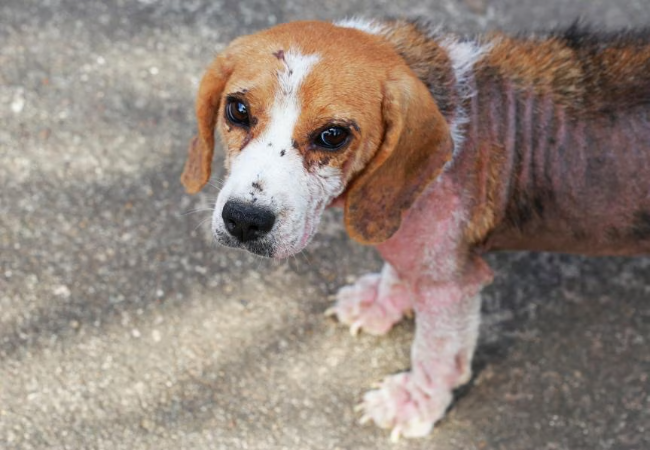Vet Guide to Demodicosis (“Red Mange”) in Dogs 2025 🐶🩺

In this article
Vet Guide to Demodicosis (“Red Mange”) in Dogs 2025🐶🩺
By Dr. Duncan Houston BVSc
Demodicosis, or demodectic mange, is a parasitic skin disease caused by overgrowth of follicular mites (usually Demodex canis, D. injai, or D. cornei) when a dog’s immune system is weakened or immature. These cigar-shaped mites live normally in low numbers, but in immunocompromised individuals trigger proliferation and skin disease.
📍 Forms & Risk Factors
- Juvenile-onset (localized): Common in puppies under 1–2 years; often mild and self-resolves as immunity matures.
- Adult-onset: Affects mature dogs; often signals underlying disease or immunosuppression—e.g., Cushing’s, hypothyroidism, steroids.
- Generalized disease: Widespread lesions, often with secondary infections; may be life-threatening if untreated.
⚠️ Clinical Signs
- Hair loss (alopecia), especially on the face, limbs, and trunk.
- Redness, scaling, pustules, papules, comedones, crusts.
- Secondary bacterial pyoderma is common in generalized cases.
- May be pruritic, especially in D. cornei or if infections are present.
🔬 Diagnosis
- Deep skin scrapings or hair plucks: Confirm diagnosis by identifying mites.
- Punch biopsy: Used for pododermatitis or thick-skinned breeds.
- Adult-onset assessment: Perform bloodwork to identify endocrine or immune disorders.
💊 Treatment Options
- Localized juvenile: Often just monitor; if treatment needed, topical benzoyl peroxide/chlorhexidine gels may suffice.
- Amitraz dips: Weekly dips until two negative scrapings; monitor for side effects.
- Oral macrocyclic lactones: Ivermectin, milbemycin oxime, moxidectin daily until clear; watch for MDR1-sensitive breeds.
- Isoxazolines: Fluralaner, afoxolaner, and sarolaner are proven effective, often safer.
- Treat secondary infections: Use antibacterial shampoos or systemic antibiotics based on cytology.
📈 Monitoring & Prevention
- Continue treatment until two consecutive scrapings are negative, then for another 4 weeks.
- Recheck every 4–8 weeks; relapse may occur within 3–6 months if the underlying cause remains.
- Neuter dogs with generalized juvenile-onset to reduce recurrence risk.
- For adult-onset, manage underlying conditions to prevent recurrence.
✅ Dr Houston’s Veterinary Tips
- 🔍 Scrape skin lesions early if demodex is suspected—promotes early diagnosis.
- 📊 Distinguish juvenile vs adult onset to guide workup needs.
- 💪 Use isoxazolines for easier dosing and fewer side effects.
- 🛁 Include medicated shampoos to reduce mites and infections.
- 📋 Emphasize follow‑up scrapings and check for relapses.
If you notice patches of hair loss, scaling, red bumps—or pups failing to improve—connect via AskAVet.com for diagnostic guidance. 🐾❤️






